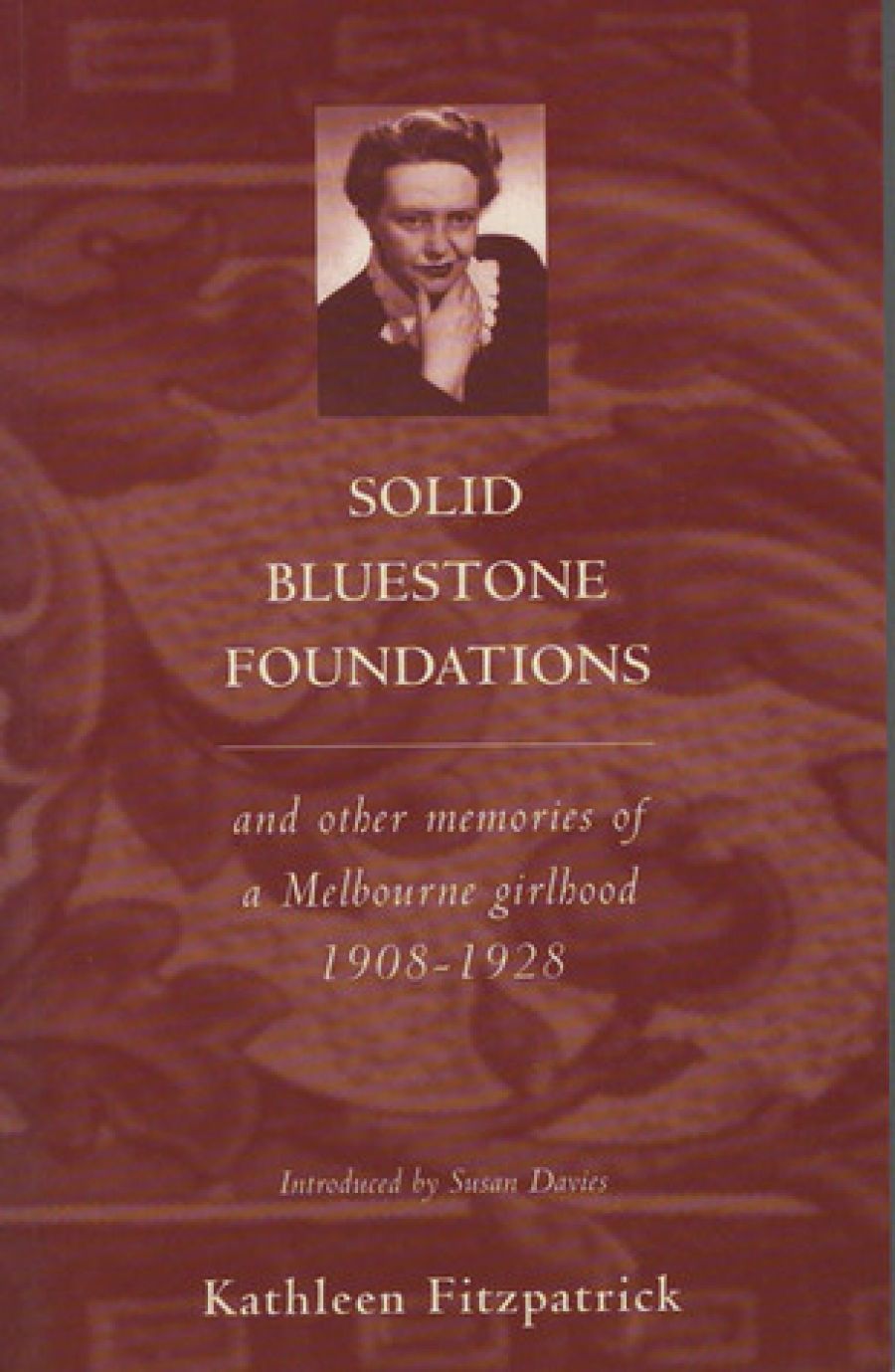
- Free Article: No
- Contents Category: Memoir
- Review Article: Yes
- Online Only: No
- Custom Highlight Text:
Kathleen Fitzpatrick wanted to be an actress. Instead, she became a famous lecturer and teacher in the History Department at the University of Melbourne, and in one of the frequent revealing asides in her memoir implies that perhaps this fact explained her ability as an inspiring lecturer.
- Book 1 Title: Solid Bluestone Foundations and Other Memories of a Melbourne Girlhood, 1908-1928
- Book 1 Biblio: Macmillan, 210 pp, $16.95 pb
Now she has blown her cover, however, and the book which emerges here embodies one of the rarely perceptive accounts of a Melbourne Catholic girlhood. One of three children, she describes in a significant passage how she came to sense that all was not well on the domestic front. In a section which owes its power to what is not said, she describes when she evolved into a very difficult child, subject to rages, kicking and screaming, disobedience, impertinence and general unruliness. ‘I did not then know what was wrong but I knew that something was, and lashed out in protest. What was really going wrong was an irretrievable breakdown in my parents·marriage.’
In these circumstances and in others which the reader will understand, the Pitt family came to adopt ‘Hughenden’ in Beaconsfield Parade, South Melbourne. This mansion was lorded over by grandpa Buxton, wealthy, arrogant and 150 per cent High Victorian, a transplanted exploiter as an amused observer might have written him into a late nineteenth-century play. Ah, but there was also grandma, a Catholic with black Irish pride and a serene certainty which drove grandpa mad. That was a destructive combination had it got out of hand, but grandma made sure it did not.
The early part of the book is a detailed account of the hospitality and daily life at ‘Hughenden’ and the importance of entertaining people. The place seemed to teem with uncles and aunts, coming and going, including Uncle Jack, who survived the Great War in utter wretchedness at the Front only to return to Melbourne and drink away his memories of hell.
Kathleen was a convent girl and her account of the Breaking of the Will is utterly terrifying. The plain man or woman may well be confirmed in opinion that children are amazingly resilient – I think.
The conventional female preoccupations appear: ritual brushing of the hair, inculcation of correct and demure conduct, purchase of clothes (including a ‘worldly’ red dress by aunty Dot). But there is also a memorable passage on the awakening of young Kathleen to the beauties of poetry by what was surely the stereotype lesson on ‘Ode to the West Wind’. This teacher is the only nun to emerge with any credit.
Possibly the most heartfelt part of the book resides in the author’s description of the ritual trip ‘Home’ with mother and her sister and brother. She beautifully evokes the shock of the colonial when confronted with the hypocrisy and philistinism so highly characteristic of a section of British society. Her analysis is not particularly deep really but is very striking. Who will not flinch again with Kathleen Fitzpatrick at the memory of what the English ingest as ‘food’ – in this case the rubbish at Somerville College?
This book looks back not in anger nor indeed with great and mighty wonder but with a strange and affecting sadness. It is the more a work of art for that. The one weak spot in this excellent evocation is the author’s analysis of her sexuality. This was surely not too delicate a subject. There is some reason for expecting a writer of Kathleen Fitzpatrick’s quality and frankness to have explored this rather more without impropriety. Maybe this is a case of the convent striking again.
This book is recommended to all who are interested in how Australian society came to be what it is, and as a sensitive evocation of Melbourne as it was.


Comments powered by CComment